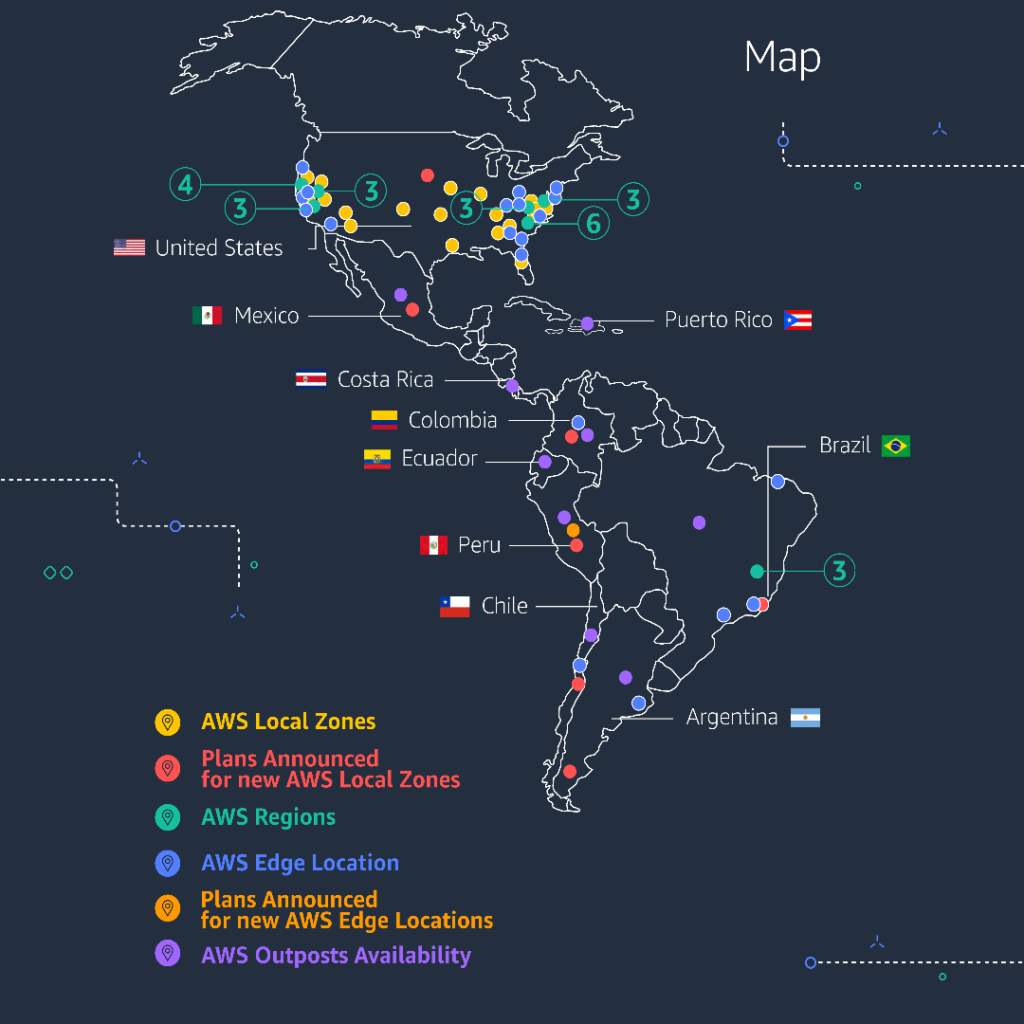Amazon Web Services (AWS) is a cloud computing platform that offers a range of services to businesses and individuals. Understanding the differences between AWS regions, AWS edge locations, and AWS availability zones is essential for businesses to determine the best AWS services for their needs.
AWS Region
An AWS region is a geographical location where AWS has one or more data centers. AWS regions are independent of each other, which means that resources in one region are not accessible from another region. Currently, AWS has 25 regions worldwide, each consisting of several availability zones.
Each region is identified by a unique code, such as us-east-1, which represents the US East (N. Virginia) region. AWS regions are designed to provide low latency and high availability to customers in that region. For example, if a business has customers in Europe, they can deploy their applications in the AWS Europe (London) region to reduce latency and improve performance.
AWS Availability Zone
An AWS availability zone is a data center within an AWS region. Availability zones are physically separate from each other and are connected via a high-speed network. Each availability zone is designed to be independent of other availability zones in the same region, which means that if one availability zone fails, the other availability zones in the region continue to operate normally.
AWS availability zones are identified by a unique code, such as us-east-1a, which represents the first availability zone in the US East (N. Virginia) region. Businesses can deploy their applications across multiple availability zones to improve fault tolerance and high availability.
AWS Edge Location
An AWS edge location is a data center that is designed to provide low latency and high performance to users in a specific geographic area. Edge locations are used by AWS services such as Amazon CloudFront and AWS Global Accelerator to distribute content and improve performance.
Currently, AWS has more than 250 edge locations worldwide, which are located in major cities such as New York, London, and Tokyo. Edge locations are not the same as availability zones or regions, as they do not store data or provide computing resources. Instead, edge locations are used to cache data and improve performance for end-users.
Differences between AWS Region, AWS Availability Zone, and AWS Edge Location
The main differences between AWS regions, availability zones, and edge locations are their geographical scope and purpose. AWS regions are geographical locations that are designed to provide low latency and high availability to customers in that region. Availability zones are data centers within an AWS region that are designed to be independent of each other and improve fault tolerance and high availability. AWS edge locations are data centers that are designed to improve performance and reduce latency for end-users in a specific geographic area.
Conclusion
Understanding the differences between AWS regions, availability zones, and edge locations is essential for businesses to determine the best AWS services for their needs. AWS regions provide low latency and high availability to customers in a specific geographic area, while availability zones improve fault tolerance and high availability. AWS edge locations are used to improve performance and reduce latency for end-users. By leveraging AWS regions, availability zones, and edge locations, businesses can build highly available and fault-tolerant applications that provide a great user experience.





